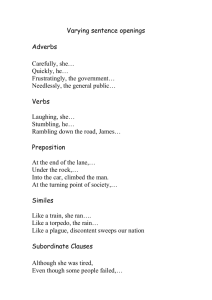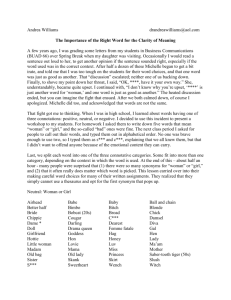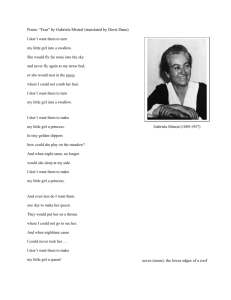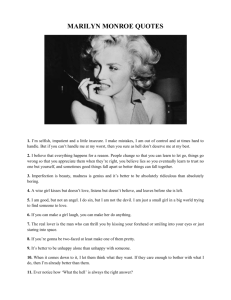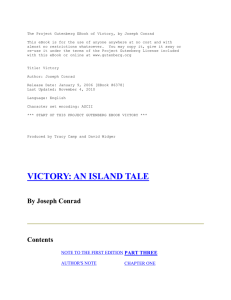Bad Education
advertisement
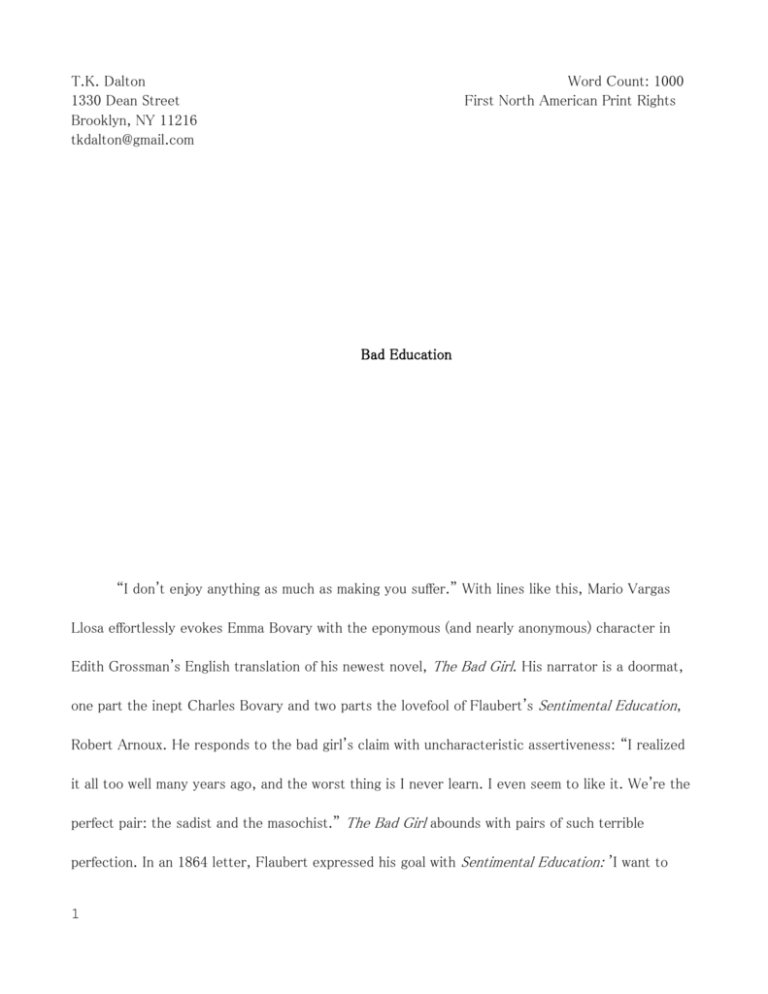
T.K. Dalton 1330 Dean Street Brooklyn, NY 11216 tkdalton@gmail.com Word Count: 1000 First North American Print Rights Bad Education “I don't enjoy anything as much as making you suffer.” With lines like this, Mario Vargas Llosa effortlessly evokes Emma Bovary with the eponymous (and nearly anonymous) character in Edith Grossman's English translation of his newest novel, The Bad Girl. His narrator is a doormat, one part the inept Charles Bovary and two parts the lovefool of Flaubert's Sentimental Education, Robert Arnoux. He responds to the bad girl's claim with uncharacteristic assertiveness: “I realized it all too well many years ago, and the worst thing is I never learn. I even seem to like it. We're the perfect pair: the sadist and the masochist.” The Bad Girl abounds with pairs of such terrible perfection. In an 1864 letter, Flaubert expressed his goal with Sentimental Education: 'I want to 1 write the moral history of the men of my generation - or, more accurately, the history of their feelings.'' With this erotically-charged tale spanning thirty years of exile, deception, revolution, and more, Vargas Llosa contributes a chapter to a revised edition with this consuming, sprawling book about love, its secrets, and its seemingly inextricable relationship with human suffering. The story begins in 1950s middle-class Lima, where a teenager named Lily mambos away with the heart of the quiet, bookish Ricardito. “I fell in love like a calf,” he recalls decades later. Despite his devotion during that swinging summer, Lily repeatedly refuses Ricardo's affection, and when she's revealed to be not Chilean as she's claimed, she disappears. The pattern repeats itself for decades, but knowing this spoils nothing. Despite its narrator's unwavering devotion to a deceptive compulsive liar, The Bad Girl is remarkably suspenseful. Vargas Llosa achieves this by pairing Ricardo with a rotating cast of foils who force the complacent narrator to act, and perhaps not coincidentally, this is precisely the appeal to him of the bad girl. As Lily the mambo-dancing teenager, she was able to pull his head out of his French textbook. After Ricardo moves to Paris, he meets one Comrade Arlette (guess who?) on her way to a revolutionary training camp via France. Though love in the 20th century became a political act, and as important as politics seems to many of these characters, for Ricardo and others, politics is also a front for something emotional and nebulous, secondary to love. Even while watching as his uncle and others like him back in Peru “reached old age—the very brink of death—bewildered, asking themselves why we were moving backward instead of advancing and were worse off now...than when they were starting out,” to Ricardo, his own hard personal history and his country's political turmoil seem interchangeable. 2 In both cases, the way it turned out was not the only possibility. In fact, when the bad girl is away, Ricardo flourishes. Over the years he develops temporary, intense friendships with a gifted interpreter nicknamed The Dragoman, a young family with a child who does not talk, a barrelshaped revolutionary, a young theater designer, and an aging man in Peru who can find the right place to build a jetty by instinct alone. Only through these relationships is he able to even ask himself why he tolerates the bad girl, someone who—when she's there at all—responds to “I love you” with: “You'll never live quietly with me, I warn you. Because I don't want you to get tired of me, to get used to me. And even if we marry to straighten out my papers, I'll never be your wife. I always want to be your lover, your lapdog, your whore...Because then I'll always keep you crazy about me.” The perspective of one friend, a bisexual Peruvian who paints portraits of thoroughbred horses belonging to aristocratic Londoners, gives a key insight into the nature of love for these men, and for the bad girl: “The secret to happiness, at least to peace of mind, is knowing how to separate sex from love. And, if possible, eliminating romantic love from your life, which is the love that makes you suffer. That way, I assure you, you live with greater tranquility and enjoy things more.” The notion of love in The Bad Girl seems inextricable from and even inconceivable without suffering. For her part, the bad girl is equally trapped. She runs away with a Japanese gangster and, via The Dragoman, contacts Ricardo. He arranges a visit and confronts the love of his life by asking the bad girl whether the gangster, Fukuda, is the love of hers: “I don't know if what I feel for Fukuda is love. But never in my life have I depended so much on anyone the way I depend on him. The truth is he can do whatever he wants with me.” She didn't say this with the joy of someone, like the Dragoman, who had discovered a love-passion. Instead she was alarmed, surprised at something like this happening to a person like her, who had 3 thought herself immune to those weaknesses. There was something anguished in her eyes the color of dark honey. “Well, if he can do whatever he wants with you, that means you've finally fallen in love. You're a glacial woman, and I hope this Fukuda makes you suffer the way you've made me suffer for so many years...” I felt her grasp my hand and rub it. “It isn't love, I swear. I don't know what it is, but it can't be love. More a sickness, a vice. That's what Fukuda is for me.” If all happy families are alike and each unhappy family is unhappy in its own way, the same could be said of relationships. What's fascinating about Ricardo and the bad girl is how resonant their connections are with all kinds of love, from tryst to marriage. Once past the conceit, the unhappiness between, within, and around these two is so singular, I never knew what was going to happen next—almost like being in love. Almost. 4
